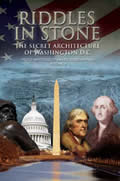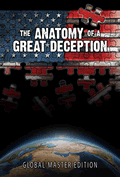By
Servando Gonzalez
September 1, 2015
NewsWithViews.com
Michel Chossudovsky is an award-winning author, Professor of Economics (emeritus) at the University of Ottawa, and Founder and Director of Global Research, Center for Research on Globalization, in Montreal. He is the author of several books on the subjects of globalization, the New World Order and the 9/11 events. Until recently, however, I didn’t know that Professor Chossudovsky had a soft spot for Fidel Castro.
From October 12 to 15, 2010, Professor Chossudovsky had extensive and detailed discussions with Castro in Havana, pertaining to the dangers of nuclear war, the global economic crisis and the nature of the New World Order. In it, Castro expressed his concern about the threat of nuclear war and the future of mankind.[1] Early this year, however, Professor Chossudovsky published part of the interview that was omitted when it was published in 2010: “Castro’s Message on the Dangers of Nuclear War.”
In his message, recorded on October 15, 2010, Castro stated: “The use of nuclear weapons in a new war would mean the end of humanity,” adding: “Each and every government in the world has the obligation to respect the right to life of each and every nation and of the totality of all the peoples on the planet.”
Castro ended his message saying: “In a nuclear war the ‘collateral damage’ would be the life of all humanity. Let us have the courage to proclaim that all nuclear or conventional weapons, everything that is used to make war, must disappear!”
It seems, however, that either Chossudovsky is a careless researcher — which I doubt — or he doesn’t want to see the facts that deny his beliefs of a Castro pacifist and anti-nuclear war advocate. On the contrary, the available record shows that Fidel Castro has always been an advocate for nuclear war. Actually, Fidel Castro is the man who in 1962 brought the world closer to a nuclear Armageddon than never before or after.
So, lets examine the facts to take a look at Castro’s true feelings about nuclear war.
In December 1962, less than a month after the end of the Cuban missile crisis, the San Francisco Chronicle and News Call Bulletin published a UPI cable claiming that Ernesto “Che” Guevara told a reporter in Havana that “to defend [himself] against aggression” Fidel Castro had planned a nuclear attack on key U.S. cities, including New York. Though the Chronicle buried the story on page 16, the News Call Bulletin ran a dramatic front-page headline in big, bold letters: “How Castro Plotted Atomic Attack on US!” The Chronicle added, “Secretary of State Dean Rusk called Guevara’s remark about a nuclear attack ‘just talk’.”[2]
But CFR member Dean Rusk was dead wrong. Guevara’s remarks were not ‘just talk.’ In an interview Che gave a few weeks after the crisis to Sam Russell, a British correspondent for the Daily Worker, Guevara said that if the missiles had been under Cuban control, they would had fired them off.[3]
It is a matter of public record that Castro was extremely dissatisfied with the peaceful solution of the Cuban missile crisis. The fact that nuclear war had been averted, and the Russians had allegedly received from the American government a pledge for the non-invasion of Cuba, was apparently not important for Castro. Actually, Castro was itching for a fight—in this case the definitive fight, a nuclear one.
According to documents made public in Cuba in August 1997, six years after the missile crisis, in a speech to the Central Committee of Cuba’s Communist Party in 1968, Castro said he felt “an incredible love” for the nuclear missiles that brought on the crisis, and wanted to keep them even after the Soviets agreed to remove them. Castro admitted to laughing with his advisers even as the possibility of nuclear war loomed, as documents published by the French daily Le Monde show.[4]
But there is more about Castro’s efforts to trigger a nuclear war between the U.S. and the U.S.S.R.
On October 3, 1962, a few days before the onset of the crisis, Castro sent Roberto Santiesteban, one of his trusted men, to New York on a key mission. Santiesteban had just been appointed to a minor post at the Cuban mission to the United Nations. His diplomatic passport identified him as an “attaché” to the Cuban mission. Santiesteban’s professional field, however, was not diplomacy. Quite the contrary, he was an expert in terrorist techniques, just graduated from a highly secret school of sabotage and subversion, not far from Havana.
As soon as Santiesteban arrived in New York, he contacted the rest of his team, including José Gómez Abad and his wife Elsa, both attachés at the Cuban mission, and José García Orellana, a Cuban immigrant who ran a costume jewelry shop in Manhattan. FBI estimates of how many others were involved in the plot range from twenty-five to fifty people. The secret mission of the terrorist team was to accomplish Castro’s orders to blow up a big portion of Manhattan, including the Statue of Liberty, Macy’s department store, several subway stations, the 42nd street bus terminal and Grand Central station, as well as several refineries along the New Jersey shore, including the Humble Oil and Refining Company in Linden. To this effect they stored a huge cache of explosives at Garcia’s shop.[5]
But the saboteurs’ plan was too ambitious and included too many people, and soon the FBI got word of it and detained the main conspirators. Had their plan worked out the way it had been conceived, it would undoubtedly have ignited American public opinion and prompted retaliation against Cuba. Had it occurred during the tense days of the missile crisis, as Castro had planned, it may have been taken for a Russian preemptive attack on the United States and may have triggered a spasm-like retaliatory strike on the Soviet Union, with unpredictable consequences. Fortunately, the plan failed. But Fidel Castro is a very resourceful man. After his failed attempt to create a provocation that may have brought a nuclear confrontation between the superpowers, Castro pulled another ace from his sleeve.
In 1975 Castro told Senator George S. McGovern that, during the crisis, he would have taken a harder line than Khrushchev.[6] Documents later declassified show that, on October 26, Castro demanded an assurance from Khrushchev that, if the U.S. invaded Cuba, the Soviet Union would launch a nuclear attack against the United States. In a clear reference to the use of nuclear weapons against the United States, Castro urged Khrushchev to consider the “elimination of such a danger,” and added, “there is, I believe, no other choice.”[7] But, apparently not happy with the Soviet premier’s non-committed answer to his plight, Castro took some specific steps to “help” Khrushchev push the button.
Following Castro’s orders, and disregarding Soviet advice, in the morning of Saturday, October 27, antiaircraft batteries manned by the Cuban army began firing at American low-flying reconnaissance planes, damaging at least one. As Castro himself later told his biographer Tad Szulc, “I am absolutely certain that if the low-level flights had been resumed we would have shot down one, two, or three of these planes . . . With so many batteries firing, we would have shot down some planes. I don’t know whether this would have started nuclear war.”[8]
Though Cuban crews were operating anti-aircraft guns, the powerful surface-to-air missiles (SAMs) were under the Soviet’s tight control, and the Cubans had no access to the bases and didn’t know how to operate them. Nevertheless, at about 10:00 a.m. on that same Saturday morning, an American U-2 was shot down by a SAM fired from a battery at Los Angeles, near Banes, Oriente province, in the eastern part of Cuba.
According to Seymour Hersh, there is strong evidence that, on October 26, 1962, a Cuban army unit attacked and overran a Soviet-manned SAM base at Los Angeles, killing many Soviet soldiers and seizing control of the site. Hersh based his article on information partly drawn from an interview with former Department of Defense analyst Daniel Ellsberg citing classified material from a post-crisis study of the event. The speculation is based on an intercepted transmission from the Soviet base at Los Angeles indicating heavy fighting and casualties. Adrián Montoro, former director of Radio Havana Cuba, and Juan Antonio Rodríguez Menier, a senior Cuban intelligence officer who defected in 1987, confirmed Ellsberg’s report.[9]
Though both Castro and the Russians have categorically denied that the attack took place, Raymond L. Garthoff, Special Assistant for Soviet bloc Political/Military Affairs in the State Department during the Kennedy administration, claims that, in fact, from October 28, the Cuban army did surround the Soviet missile bases for three days.[10] It is evident that, whatever really happened, Castro was frantically trying to precipitate a nuclear confrontation between the Soviet Union and the United States which would have destroyed most human life in the Northern hemisphere.
Actually, there is evidence that this is exactly what Castro had in mind.
Late in the night of October 26, Castro visited the Soviet embassy in Havana and stayed through the early hours of the next day writing a letter to Khrushchev. The most important part of the letter is Castro’s efforts to convince Khrushchev that an American invasion of Cuba was imminent, and his request that the Soviet Union should launch a preemptive nuclear attack against the United States. Castro’s words were,
I tell you this because I believe that the imperialists’ aggressiveness is extremely dangerous and if they actually carry out the brutal act of invading Cuba in violation of international law and morality, that would be the moment to eliminate such danger through an act of clear legitimate defense, however harsh and terrible the solution would be, for there is no other.[11]
In a letter of October 30, a terrified Khrushchev answered Castro’s request in very precise terms:
In your cable of October 27 you proposed that we be the first to launch a nuclear strike against the territory of the enemy. You, of course, realize where that should have led. Rather than a simple strike, it would have been the start of a thermonuclear war.[12]
Splitting semantic hairs, Castro and his friends at Harvard University and the National Security Archive have repeatedly tried to deny that in his letter he asked Khrushchev to launch a preemptive nuclear salvo on the U.S.[13] Nevertheless, Khrushchev himself confirmed that this was exactly what Castro asked him to do. In the Soviet Premier’s clear and specific own words, “Castro suggested that in order to prevent our nuclear missiles from being destroyed, we should launch a preemptive strike against the United States.”[14]
During Castro’s visit to the Soviet Union in 1963, he brought the subject up again, but Khrushchev energetically refuted him. In his memoirs, Khrushchev mentioned that he explicitly told Castro “You wanted to start a war with the United States. If the war had begun we would somehow have survived, but Cuba no doubt would have ceased to exist. It would have been crushed into powder. Yet you suggested a nuclear strike!”[15]
The Cuban missile crisis was finally resolved in a peaceful way, which apparently was not the way Castro envisioned. Evidence indicates that, after the crisis, Dr. Strangelove Castro was still planning to destroy the United States and the world in a nuclear Armageddon, and took strong steps to fulfill his cherished dream.
In 1989 General Rafael del Pino Díaz, the highest ranking Cuban defector, said that at the time of the Grenada operation in 1983, Castro ordered Cuban MiG 23 pilots to program their computers to attack targets in Florida. Among the selected targets was the Turkey Point nuclear plant, which Castro said had the potential of producing a nuclear disaster larger than Chernobyl.[16] According to Gen. del Pino, Castro’s words were: “I don’t have nuclear bombs, but I can produce a nuclear explosion.”[17]
In another interview, Gen. del Pino claimed that, in 1968, when a group of Cubans were authorized to recover a MiG-17 taken to the U. S. by a defector, Cuban agents secretly made detailed photographs of Homestead Air Force Base in Florida. The base, Gen. del Pino said, had been targeted for an air attack by Cuban planes. The intention of the attack, Castro told the Cuban Air Force officers, would be to provoke the United States into an even stronger action “so the Soviet Union would become involved.”[18]
Even more, it seems that Castro’s dreams of nuclear Armageddon are still alive. Since 2010, Castro has been consistently warning the world about the inevitability of nuclear war.[19]
Castro is old, but he is not finished yet, and it is too early to tell his whole story. In 1961 Herbert Matthews called him “a prophet of doom.”[20] He was right. As long as he is alive and in power in Cuba he will persist in his nuclear Armageddon dreams. Seemingly his grandiose plan is to go to the trashcan of history with a big bang.
Like an ancient hero, Castro wants to go to his grave with human sacrifices. One of Castro’s biographers, Georgie Anne Geyer, said that she has always believed that, “given his absolutist and apocalyptic personality, if he felt he was cornered or doomed, he would go down in an Armageddon end like Hitler in the bunker.”[21] Castro’s own sister, Juana, said a long time ago that her brother’s plans for Cuba are as sinister as Nero’s for Rome.[22] Testifying before the House Committee on Un-American Activities, Juana Castro affirmed that “Fidel’s feeling of hatred for this country cannot even be imagined by Americans. His intention, his obsession to destroy the U.S. is one of his main interests and objectives.”[23]
Despite his pacifist claims in Chossudovsky’s interview, the available record shows that if Castro did not become the greatest eugenicist of all times, murdering more people than Attila, Stalin, Mao and Hitler together, it was not for lack of trying. Due to space constraints, however, I have mentioned in this article just a few of Castro’s efforts to spoil our day. For a detailed account, including Castro’s attempts to build a nuclear device and a missile to carry it, see my The Nuclear Deception: Nikita Khrushchev and the Cuban Missile Crisis.
It seems that Professor Chossudovsky fell for the oldest trick in the book: the globalist conspirators create their own controlled pseudo-opposition — a cardinal principle of Hegelian dialectic — to confuse, manipulate and control the true opposition. He failed to notice that Castro has played this role to perfection. Professor Chossudovsky must keep in mind that, even though it is true that the enemy of my enemy is my friend, the pseudo-enemy of my enemy most likely is still my enemy.
On the other hand, it is surprising, to say the least, that Professor Chossudovsky, author of the excellent book The Globalization of Poverty and the New World Order and a strong fighter against globalization, has failed to realize that Fidel Castro, a secret agent of David Rockefeller and the CFR conspirators, has enormously contributed to the globalization of poverty. He also failed to see that Castro, following his masters’ orders, turned Cuba, one of the most economically and socially advanced countries in Latin America, into a proving ground for the New World Order where the people’s poverty cannot be more evident— which explains why some key CFR members are convinced that Castro’s Cuba is the socioeconomic model to follow.[24]
This is so difficult to understand that Professor Chodussovsky, the alleged anti-globalist and fighter against the New World Order, fully agrees with the CFR globalist conspirators that Castro’s Cuba is the model to follow. Moreover, I recently discovered that he has devoted a large part of his site Global Research, Center for Research on Globalization, to publish the lies of globalist Fidel Castro.[25]
Some time ago Castro provided himself definitive proof that he is actually an agent of change working on behalf of the New World Order globalist conspirators. On October 12, 1979, Castro gave a surprisingly short speech at the 34th UN General Assembly. After giving his usual anti-American diatribe, he stated, “We want a New World Order based on justice, equality and peace to replace the unfair and unequal system that prevails today . . .”[26]
In a September 11, 1990, speech before a joint session of the U.S. Congress, President George H.W. Bush said:
Out of these troubled times, our fifth objective — a new world order — can emerge: a new era freer from the threat of terror, stronger in the pursuit of justice, and more secure in the quest for peace.
|
|
The fact that Castro’s words are so similar to CFR agent Bush’s cannot be the product of happenstance or a coincidence. I suspect that both scripts were written at the same place — most likely, the Harold Pratt House in Manhattan, headquarters of the Council on Foreign Relations.[27]
There is the possibility that Professor Chossudovsky is just another naïve, gullible academic who fell under Castro’s mesmerizing powers.[28] There is, however, another darker possibility we must consider: that like his friend Fidel Castro, Professor Chossudovsky is not the antiglobalist he claims to be.
� 2015 Servando Gonzalez - All Rights Reserved
Footnotes:
1.
Fidel Castro and Michel Chossudovsky, “Conversations
with Fidel Castro: The Dangers of a Nuclear War,” Global Research,
April 12, 2015, Global Research 13 November 2010.
2.
The information was reproduced in U.S. Senate, Committee of the Judiciary,
Subcommittee to Investigate the Administration of Internal Security Act,
“Castro’s Network in the United States,” Hearing, 88th
Congress, First Session, Part 6, February 8, 1963.
3.
The most virulent parts of Guevara’s words were suppressed by the
Daily Worker, but a full version of Guevara’s interview
was obtained and published by United Press International.
4.
Le Monde, November 24, 1997; also in “Castro Fond of Missiles,”
AP report, August 16, 1997.
5.
Andrew Tully, White Tie and Dagger (New York: Pocket Books, 1968),
pp. 74-78. Tully mistakenly believes the plot was a Soviet idea, but it
was Castro’s. The plot is also reported in Andres Oppenheimer, Castro’s
Final Hour (New York: Simon and Schuster, 1992).
6.
U.S. Senate, Committee on Foreign Relations, “Cuban Realities: May
1975,” a Report by Senator George S. McGovern to the Committee on
Foreign Relations, August 1975, p. 14.
7.
Dino A. Brugioni, Eyeball To Eyeball (New York: Random House,
1991), p. 461. Castro’s letter to Khrushchev of October 26 is part
of a set of documents obtained by the Cold War International History Project,
Woodrow Wilson International Center, Harvard Collection.
8.
Daniel Ellsberg, “The Day Castro Almost Started World War III,”
The New York Times, October 31, 1987, p. A7.
9.
Seymour Hersh, “Was Castro Out of Control in 1962?” in the
Washington Post, October 11, 1987; Adrián Montoro, “Moscow
Was Caught Between Cuba and U.S.,” the New York Times, November
17, 1987.
10.
James Blight and David Welch, On the Brink (New York: Hill and
Wang, 1989), p. 56
11.
Document 45: Prime Minister Fidel Castro’s letter to Premier Khrushchev,
October 26, 1962, in Laurence Chang and Peter Kornbluh, eds., The
Cuban Missile Crisis, 1962: A National Security Archive Documents Reader
(New York: The New Press, 1992), p. 189. Castro’s letter of October
26, 1962, to Khrushchev is part of a set of documents obtained by the
Cold War International History Project, Woodrow Wilson International Center,
Harvard Collection.
12.
Document 57, Premier Khrushchev’s
letter to Prime Minister Fidel Castro, October 30, 1962, in Laurence
Chang and Peter Kornbluh, eds.,
13.
See, James Blight and David Welch, On the Brink (New York: Farrar,
Strauss, 1989), p. 359.
14.
Nikita Khrushchev, Khrushchev Remembers: The Glasnost Tapes (Boston:
Little, Brown and Company, 1990), p. 177.
15.
Ibid., p. 183.
16.
Ernesto Betancourt, “Is Castro Planning a Preemptive Strike Against
the U.S.?” (Washington, D.C., 1996), p. 4.
17.
Jeanne Kirkpatrick, “Is a stubborn Castro testing U.S. defenses?,”
the Miami Herald, March 31, 1991, p. 3C.
18.
Joseph B. Treaster, “Defecting General Says Cuba Has Plan to Raid
Base in the U.S. if It Is Attacked,” the New York Times,
October 11, 1987. For the whole story about Castro’s dreams of nuclear
Armageddon see Servando Gonzalez, The Nuclear Deception: Nikita Khrushchev
and the Cuban Missile Crisis (Oakland, California: Spooks Books,
2002), pp. 149-173.
19.
See, Webster G. Tarpley,
“Fidel
Castro Warns of Imminent Nuclear War,” Global Research, August
10, 2010. Fidel Castro Ruz, “World
Peace Is Hanging By A Thread,” Global Research, January 22,
2012, Fidel Castro: “The
Danger of Nuclear War,” Global Research, April 06, 2013.
20.
Herbert Matthews,
The Cuban Story (New York: George Brazillier, 1961), p. 172.
21.
Georgie Anne Geyer, “Anti-Reforms are evidence the Cuban revolution
is over,” Mobile Press Register, June 6, 1994, 13-A.
22.
Jesús
Conte Agüero, Fidel Castro: Psiquiatría y Política
(Mexico, D.F.,: Editorial Jus, 1968), p. 105.
23.
Report of the Committee
of Un-American Activities, House of Representatives, June 1965.
24.
In 2001, World Bank President James Wolfensohn, (CFR), praised Castro
for doing “a great job” in providing for the social welfare
of the Cuban people. Wolfensohn pointed to Cuba as a model to follow.
See, Jim Lobe, “Learn From Cuba: World Bank Says,” Inter
Press Service Finance, April 30, 2001. In the late 1980s, Castro
imposed on the Cuban people similar economic measures as the ones imposed
by the IMF in certain countries, which have properly been dubbed “shock
treatment.” See, Joseph B. Treaster, “To Cure ‘Capitalist
Vice,’ Castro Applies Austerity, The International Herald Tribune,
February 9, 1987, pp. 13,17. For a detailed analysis of Castro’s
Cuba as a successful testing ground for the New World Order, see Servando
Gonzalez, Psychological Warfare and the New World Order (Oakland,
California: Spooks Books, 2010), pp. 274-286.
25,
A search on Global
Research’s site shows that Castro is mentioned 2,550 times.
26,
“Castro
Speaks, Meets Officials at U.N., Departs for Home,” Havana Domestic
Service.
27,
See, Henry Makow, “Castro
Was a Rockefeller Agent,” Before It’s News, May
12, 2015.
28,
Author Edwin Teflow has mentioned Castro’s “Hypnotic powers
of persuasion.” Eye on Cuba (New York: Harcourt, Brace & World,
1998). P. 103. Professor Chodussovsky is not he only one. Notable among
the people who have fallen under Castro’s spell are ex-Soviet ambassador
and KGB officer Aleksandr Alekseev, Colombian Nobel Prize-winner Gabriel
García Márquez, former Head of U.S. Interests Office in
Havana Wayne S. Smith, Italian publisher Giangiacomo Feltrinelli, French
philosophers Jean-Paul Sartre and Regis Debray, Senator George McGovern,
UNESCO’s director Federico Mayor, media mogul Ted Turner, Robert
S. McNamara, Jerry Brown, Arthur M. Schlesinger, Jr., and a large group
of the American liberal press and Hollywood stars who have met him. On
Castro’s mesmerizing powers see, Servando Gonzalez: The Secret
Fidel Castro: Deconstructing the Symbol (Oakland, California: Spooks
Books, 2001), pp. 31-43.
Servando Gonzalez, is a Cuban-born American writer, historian, semiologist and intelligence analyst. He has written books, essays and articles on Latin American history, intelligence, espionage, and semiotics. Servando is the author of Historia herética de la revolución fidelista, Observando, The Secret Fidel Castro: Deconstructing the Symbol, The Nuclear Deception: Nikita Khrushchev and the Cuban Missile Crisis and La madre de todas las conspiraciones: Una novela de ideas subversivas, all available at Amazon.com.
He also hosted the documentaries Treason in America: The Council on Foreign Relations and Partners in Treason: The CFR-CIA-Castro Connection, produced by Xzault Media Group of San Leandro, California, both available at the author's site at http://www.servandogonzalez.org.
His book, Psychological Warfare and the New World Order: The Secret War Against the American People is available at Amazon.com. Or download a .pdf copy of the book you can read on your computer, iPad, Nook, Kindle or any other tablet. His book, OBAMANIA: The New Puppet and His Masters, is available at Amazon.com. Servando's book (in Spanish) La CIA, Fidel Castro, el Bogotazo y el Nuevo Orden Mundial, is available at Amazon.com and other bookstores online.
His most recent book, I Dare Call It treason: The Council on Foreign Relations and the Betrayal of the America, just appeared and is available at Amazon.com and other bookstores online.
Servando's two most recent books in digital versions only are The Swastika and the Nazis: A Study of the Misuse of the Swastika by the Nazis and the first issue of the political satire series OBSERVANDO: American Inventors.
Website: www.servandogonzalez.org
E-Mail: servandoglez05(at)yahoo(dot)com




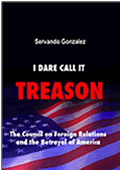
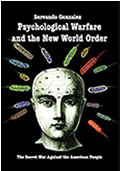


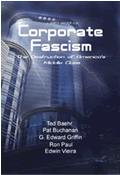
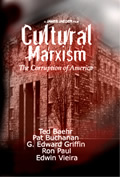
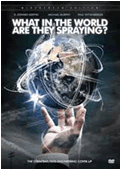




 Share
This Article
Share
This Article
